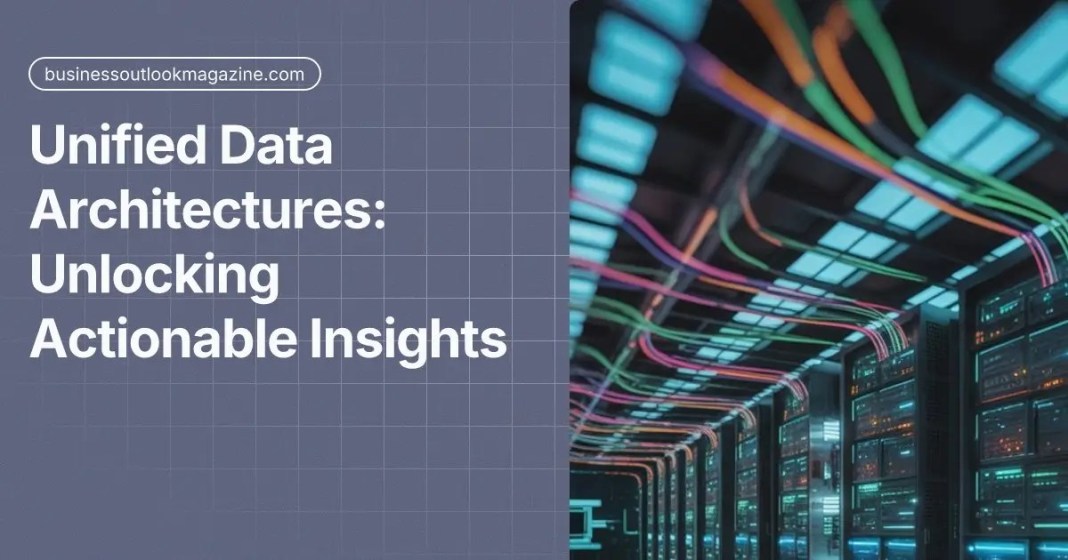We are generating so much data today it’s mind boggling. Unified Data Architectures have emerged as the answer to all that complexity, a structured way of managing and analysing all that data. According to IDC, we will create 163 zettabytes of data by 2025 and most of it will go untapped because of fragmented systems.
Historically data silos have held back decision making and businesses had to operate with incomplete insights. But now businesses are moving towards interoperable data architectures that bring together all the disparate sources into one single architecture. This isn’t just about storing data, it’s about unlocking the intelligence that will give you a competitive edge.
The Shift Towards Unified Data Architectures
Today’s businesses use multiple data sources – customer interactions, IoT devices, supply chain logs and more. The problem? Each dataset is often stored in different systems so comprehensive analysis is hard. Unified Data Architectures solve this by bringing data together in one framework so it’s consistent and accessible.
Key benefits of a Unified Data Approach:
- Seamless Data Integration – Connects structured and unstructured data sources into one place.
- Real-Time Insights – So you can act on fresh data without delay.
- Better Decision Making – A 360 degree view of your business and customer.
- Scalability & Security – Data governance and growth.
Companies like Amazon and Netflix are data driven, using unified architectures to personalise and optimise their supply chains. It’s been rightly said: “Companies that can connect the dots across their data will always outperform those that can’t.”
Is Data Just a Tool or a Reflection of Us?
As we build unified data architectures we should ask: Are we designing these for business or are we just reinforcing existing biases? Data itself isn’t neutral – it reflects the values, decisions and blind spots of those who collect and interpret it.
Consider AI-driven hiring algorithms. They promise efficiency but often inherit human bias in the data. Does this mean our data systems are just reflections of our prejudices? Or can we re-engineer them to create a fairer more insightful future?
In this sense data architecture isn’t just about technology – it’s about ethics, accountability and the vision we have for decision making. How do we make our data driven world serve humanity not amplify its flaws?
More Data Isn’t Always Better
We all know more data leads to better decisions. But too much data can paralyze organizations. Without a strategy, businesses get lost in the information without extracting value.
Instead, companies need to focus on data quality, relevance and interpretation. A Harvard Business Review study found companies that invested in data literacy training had better business outcomes than those that just collected more data. In other words smarter use of data—not more of it—is the competitive advantage.
Unlocking Actionable Insights: Turning Data into a Competitive Advantage
Data by itself isn’t valuable—its true power lies in how businesses turn actionable insights out of it. A well designed unified data architecture ensures raw data is translated into meaningful intelligence driving strategic decisions and operational efficiency.
How Businesses Unlock Actionable Insights:
- Data Visualisation – Dashboards and AI powered analytics tools make complex data easily consumable.
- Predictive Analytics – Machine learning models predict customer behaviour, market trends and operational risks.
- Automated Decision Making – AI driven systems respond faster and more accurately to real-time business challenges.
- Customer Personalisation – Businesses can tailor experiences based on deep customer insights increasing engagement and loyalty.
For example Spotify uses unified data to offer personal recommendations, each user’s experience is uniquely curated. UPS optimises delivery routes in real time, cutting costs and reducing environmental impact. The key takeaway: data is only valuable when turned into clear strategies.
How Businesses Can Adapt Today
Knowing what the future of unified data architectures looks like isn’t enough. The question is: how can businesses prepare? Here are three things to do now:
- Invest in Data Literacy – Train employees to interpret and question data not just consume it.
- Focus on Ethical AI – Implement governance frameworks so data driven decisions are fair and unbiased.
- Prioritize Actionable Insights – Build systems that filter out the noise and surface only the most important strategic info.
By making these habits part of their culture, companies can make sure data works for them—not the other way around.
What’s Next? The Future of Data-Driven Decision Making
If data is the new currency, who controls the flow? As AI systems and centralised architectures emerge, will decision making become more democratic or will data monopolies get even more powerful?
How do we make sure innovation serves people not just profits? Perhaps the bigger question is: are we ready to challenge our own assumptions about how we use data?
What do you think? Should data be a public good or a private wealth? Share this article on social media and start the conversation with your peers to get their opinions. .

